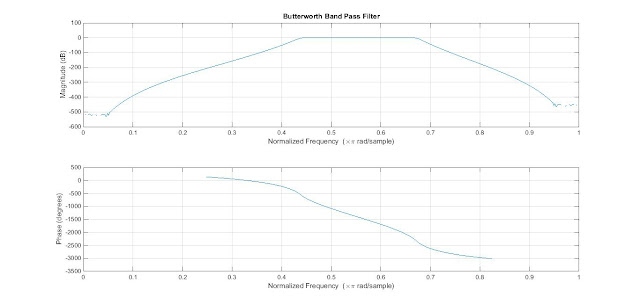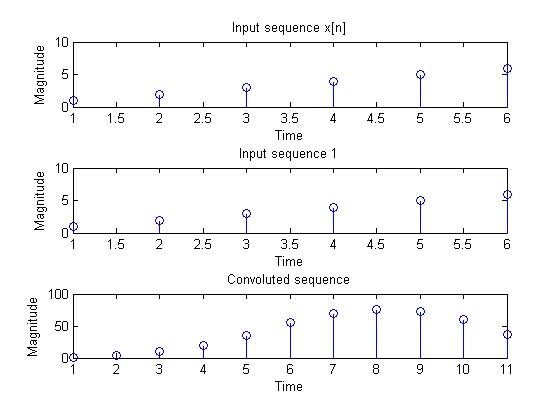Program
code
%Chebyshev band pass filter
clc;
clear all;
close all;
fp1=input ('Please input
the first pass band frequency = ');
fs1=input ('Please input
the first stop band frequency = ');
fp2=input ('Please input
the second pass band frequency = ');
fs2=input ('Please input
the second stop band frequency = ');
rp=input ('Please input
the pass band attenuation = ');
rs=input ('Please input
the stop band attenuation = ');
sf=input ('Please input
the sampling frequency = ');
p1=2*fp1/sf;
s1=2*fs1/sf;
p2=2*fp2/sf;
s2=2*fs2/sf;
p=[p1,p2];
s=[s1,s2];
[n,w]=cheb1ord(p,s,rp,rs);
[f1,f2]=cheby1(n,rp,w,'bandpass');
freqz(f1,f2);
title ('Chebyshev
Band Pass Filter');
Example of
output
Please input the first pass band
frequency = 2000
Please input the first stop band
frequency = 1600
Please input the second pass band
frequency = 3000
Please input the second stop band
frequency = 3200
Please input the pass band attenuation = 0.5
Please input the stop band attenuation =
50
Please input the sampling frequency =
9000
_______________________
Advertisement













